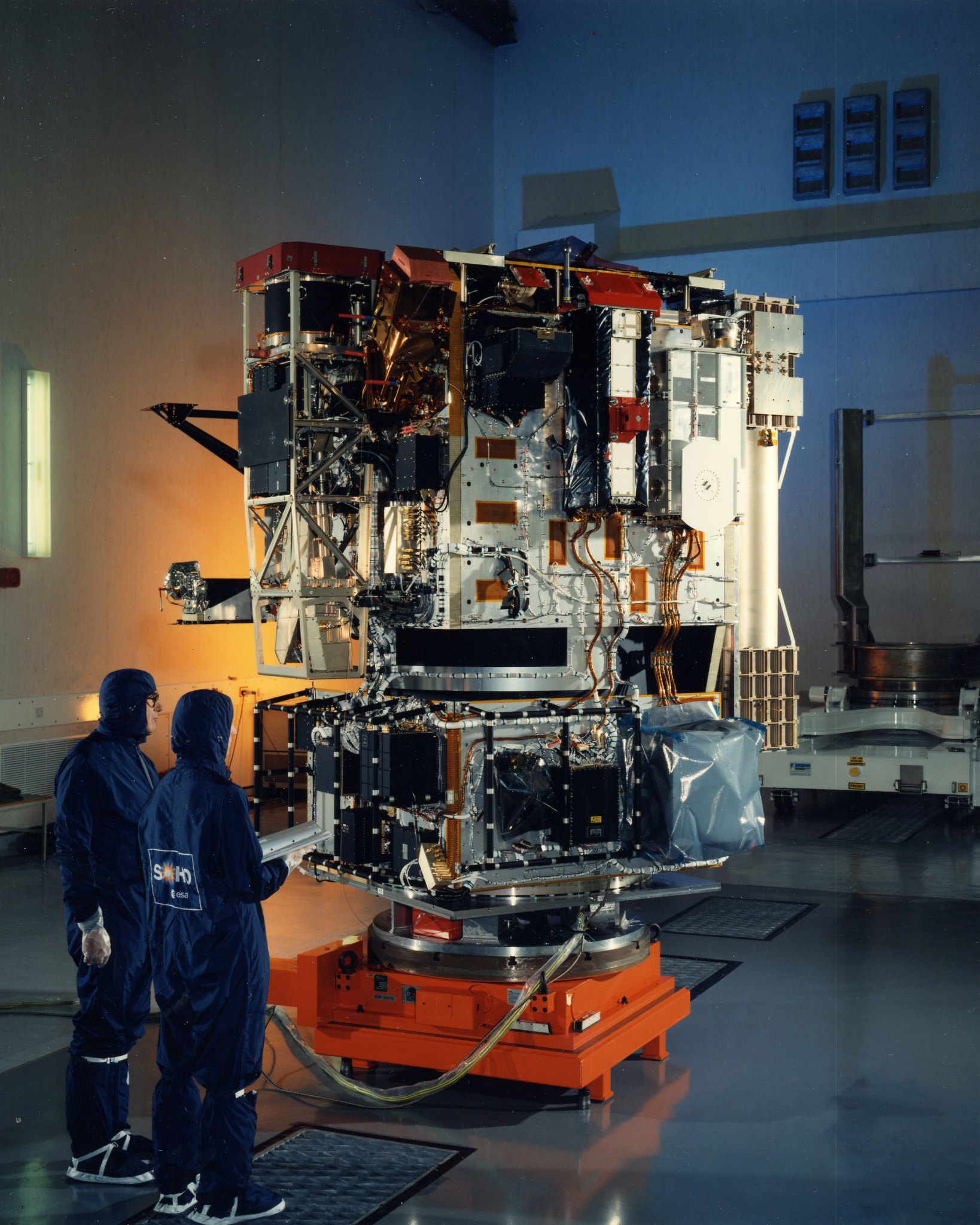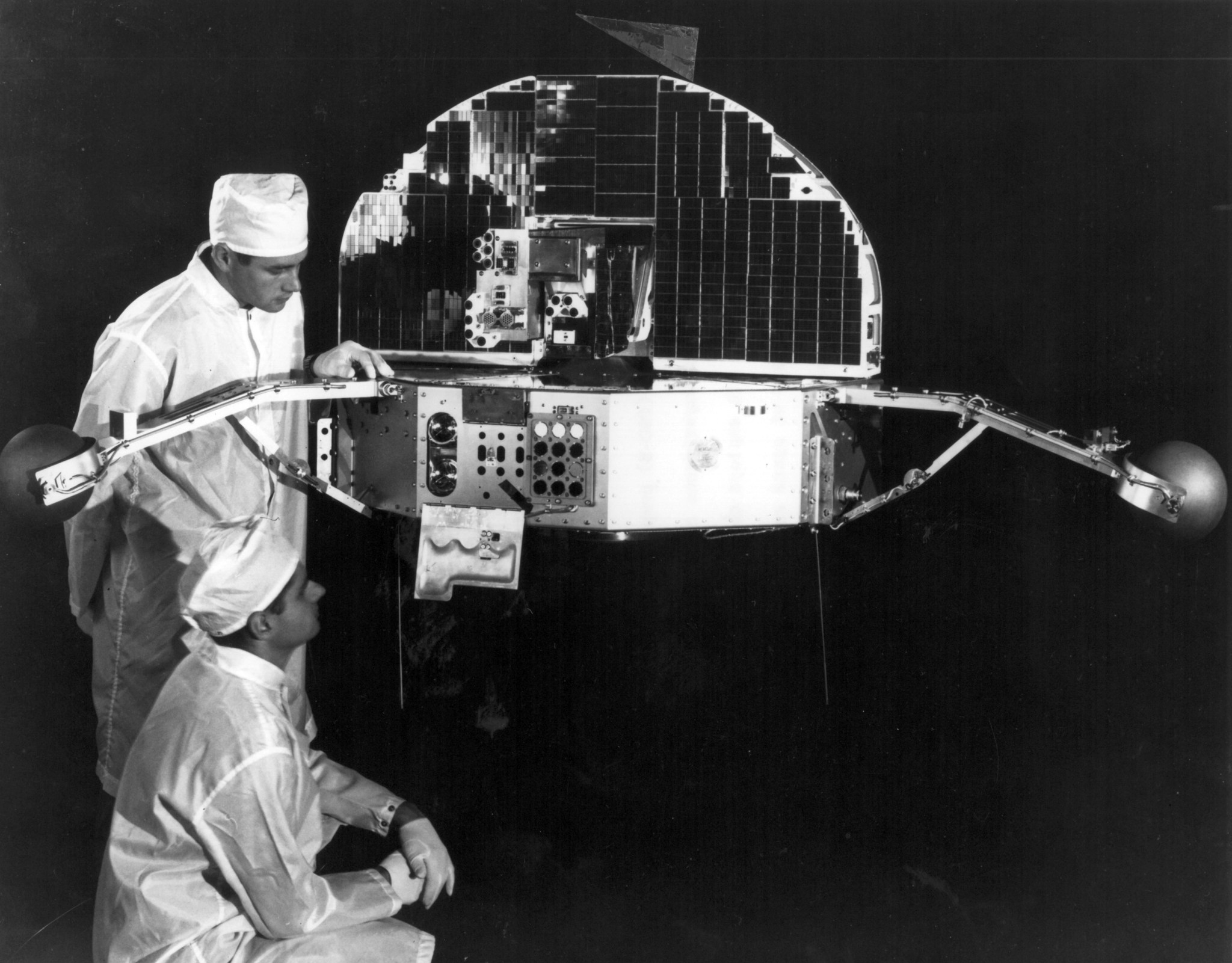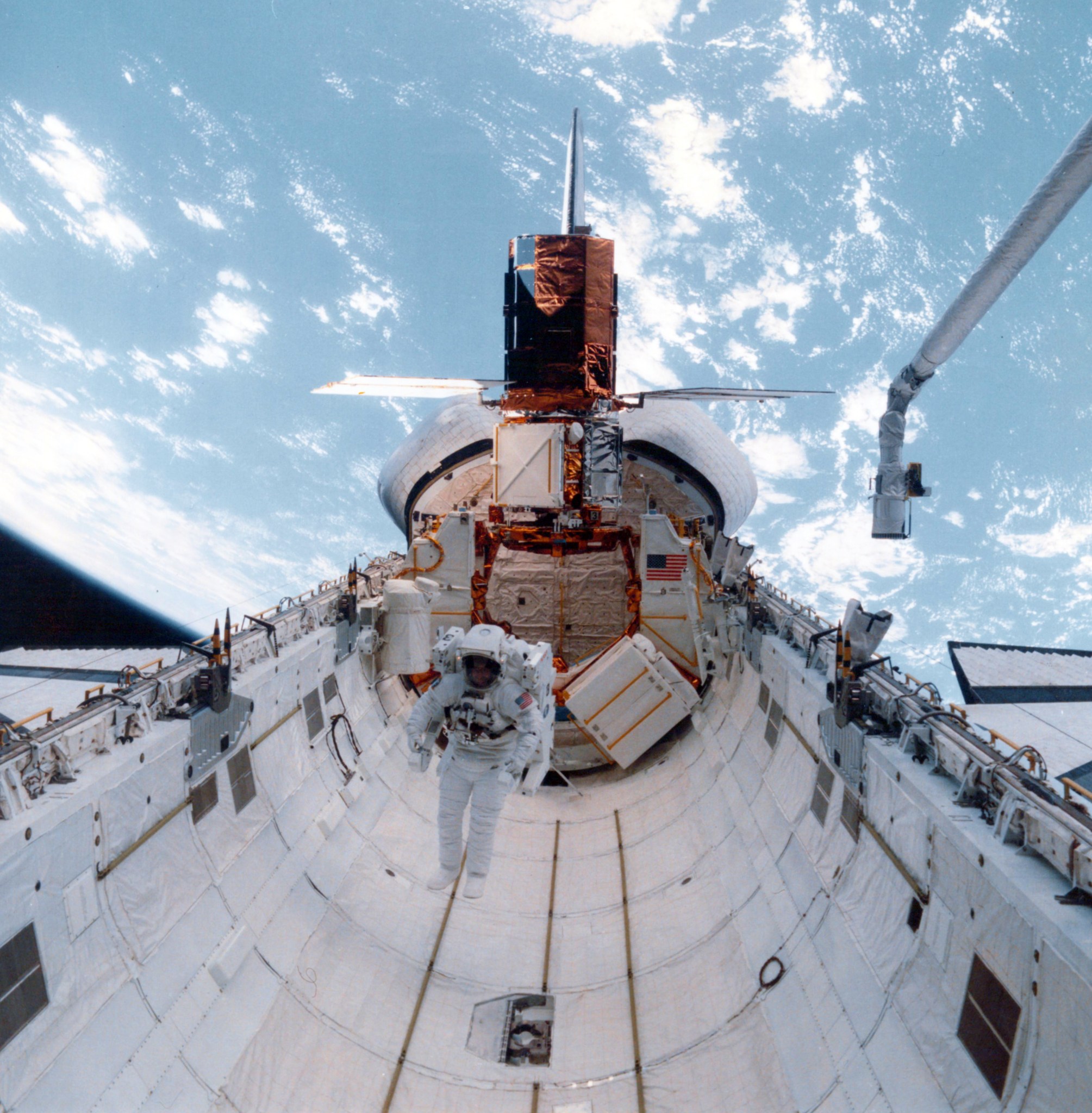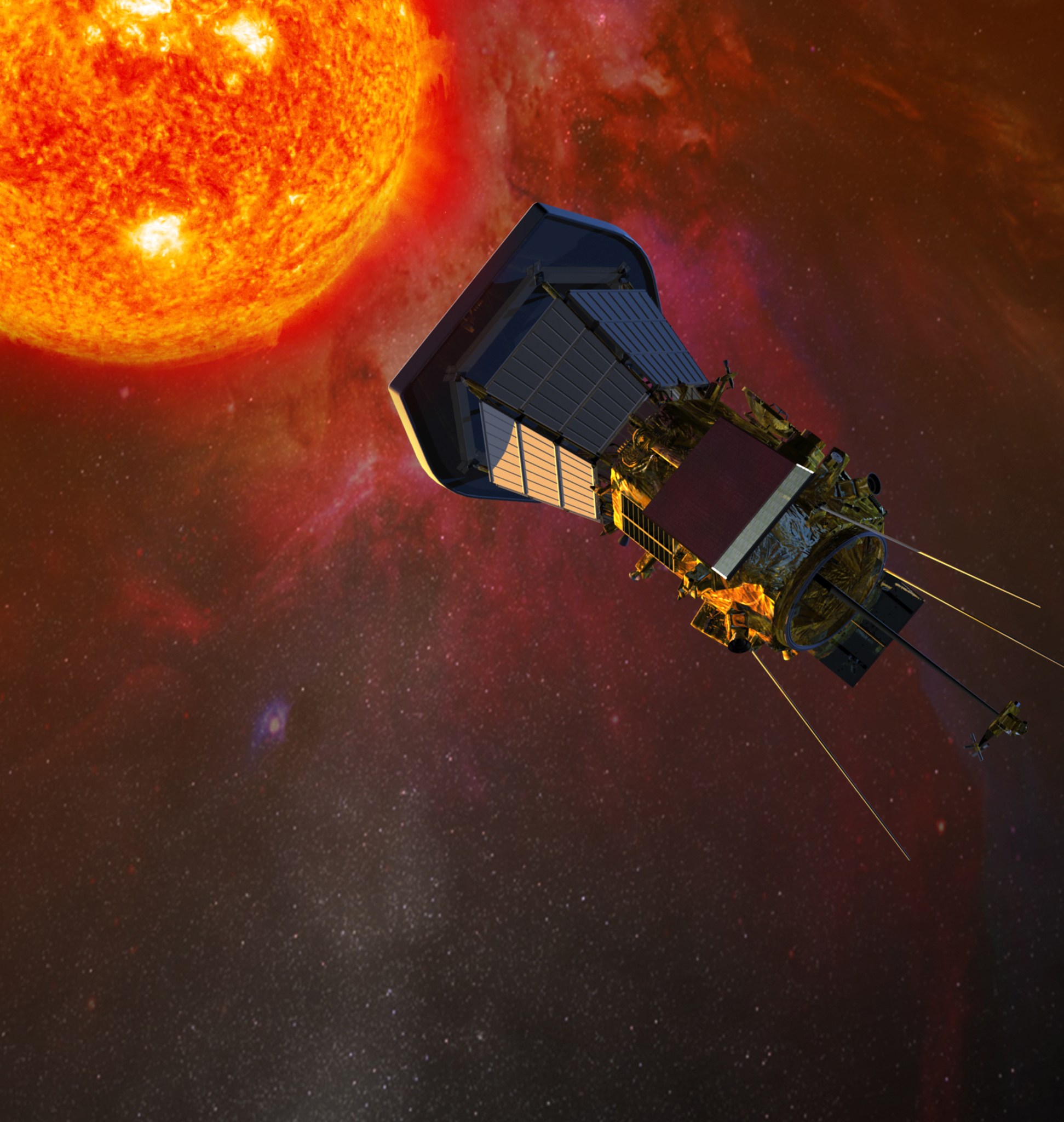Twenty years ago, the Solar and Heliospheric Observatory, a cooperative effort between NASA and the European Space Agency, launched into space and revolutionized our study of the sun and a scientific discipline called heliophysics – the study of how the sun’s influence spreads out in all directions, able to dramatically affect the space environment near Earth and throughout the solar system.
But the field was far from its infancy when that observatory, also called SOHO, launched on Dec. 2, 1995. In fact, it can trace its roots back to Thomas Harriot, who first saw sunspots through a telescope in 1610.
The study really took off about 130 years ago following Dutch astronomer Pieter Zeeman’s discovery that a magnetic field, or a field of force generated by electrical currents, alters some spectral lines. Within a decade, American astronomer George Ellery Hale used Zeeman’s discovery to demonstrate that sunspots contained strong magnetic fields. But it took NASA missions to get off the ground – literally.
“When you can get your instrument above the atmosphere, you begin to be able to see things you couldn’t see before,” said Keith Strong, heliophysicist emeritus at NASA’s Goddard Space Flight Center in Greenbelt, Maryland.
Goddard heliophysicist Joe Gurman said gathering observations from above the atmosphere was one of the first science goals of NASA as an agency – and an absolute necessity for studying the sun because Earth’s atmosphere absorbs or deflects much of the light the sun emits: most ultraviolet radiation, X-rays and gamma-rays.
After World War II, when there was a growing recognition of solar activity’s influences on radio frequency propagation in Earth’s upper atmosphere, scientists began to study that activity more intensively. They used leftover German rockets to soar above Earth’s atmosphere to measure emission in wavelength ranges absorbed by atmospheric gases, and found that the sun’s ultraviolet radiation varied wildly from year to year. But these rocket missions were limited. They could only launch to the edge of space for five to 10 minutes, and though they got marginally better over the years, it still wasn’t enough. Scientists needed something capable of long-term observation, so NASA developed spacecraft called the Orbiting Solar Observatories to study solar activity.
The OSO satellites, eight spacecraft launched between March 1962 and June 1975, performed solar physics experiments over a complete solar cycle of 11 years, during which the sun transitions from the most solar activity to the least.
“The things that came out of those missions were just groundbreaking for what we’ve been doing since,” Gurman said. From the resulting data, scientists were able to begin to understand the structure of the upper solar atmosphere, study disturbances in the solar atmosphere and more.
In the early 1960s, a whole scientific field – helioseismology – began to form around new observations of oscillations occurring on the solar surface. European Space Agency heliophysicist Bernhard Fleck, who is based at Goddard believes one of the most significant advancements in solar physics in the 20th century was the discovery of global oscillations, or pressure waves, in the sun. Those oscillations could be used to probe the structure of the sun’s interior, a process analogous to a sonogram of the sun. Previously, scientists could only speculate about what was going on inside the sun.
Solar scientists wondered whether sound waves driven by such oscillations might provide the energy source to heat the corona, the sun’s tenuous outer atmosphere, which is actually much hotter than the visible surface of the sun. Measurements in 1976 with OSO-8, the final OSO mission, however, demonstrated that the sound waves in the upper solar atmosphere contained far too little energy to heat the corona.
OSO was just the beginning. The OSO results led to heliophysics experiments on Skylab, America’s first space station, launched in 1973. On Skylab, astronauts operated a battery of telescopes to learn more about variability of the extreme ultraviolet and X-ray emission from the corona.
“Unfortunately, they also learned that using a human-operated telescope wasn’t very effective,” Gurman said. “They nearly always missed the beginning of the flare, which is when the interesting physics happens.”
Still, Skylab captured the imagination of solar scientists. Indeed, Strong said it was Skylab’s high-resolution images of the sun that inspired him when he was in college. Shortly after the end of Skylab, he joined the team of the next big solar spacecraft, the Solar Maximum Mission, at Goddard in 1980. The Solar Maximum Mission improved upon the Skylab telescopes by using automated flare detection to digitally coordinate all the instruments to direct to the flare within a fraction of a second.
Ultimately, these early missions laid the groundwork for missions like SOHO. A cooperative effort between NASA and the European Space Agency, SOHO studies the internal structure of the sun, its outer atmosphere and the origin of solar wind, the stream of ionized gas that blows continuously outward into the solar system.
SOHO offered the first 24/7 view of the giant explosions on the sun, called coronal mass ejections or CMEs, and made us aware for the first time of the sun’s effect on the technological world.
Taken together, flares, CMEs, and solar energetic particles constitute space weather, which in extreme cases can cause power grids and communications systems like GPS to fail.
“It has an impact directly on life,” Strong said. “For example, you can’t lay oil pipelines very accurately beneath the sea during times that your GPS doesn’t work.”
These generations of solar spacecraft have helped to solve a number of mysteries surrounding the sun, but they also raised more questions.
Unlike in the early days of NASA, the agency currently flies multiple spacecraft to study the sun and its effects on the solar system, providing a range of different observations.
The Solar Terrestrial Relations Observatory, or STEREO, launched in October 2006, explores the sun-Earth system, tracing the flow of energy and matter from the sun to Earth. The dual spacecraft of the observatory made 3-D imaging of the sun possible for the first time. Another mission, the Solar Dynamics Observatory, launched in 2010, observes the solar atmosphere and makes helioseismology measurements, continuously returning incredibly high-resolution images at a rapid pace of 135 megabits per second to help understand the causes of solar variability and its effect on Earth.
An upcoming mission called Solar Probe Plus, scheduled to launch in 2018, will be humanity’s first voyage to a star, exploring the sun’s outer atmosphere from as close as 3.7 million miles from the sun’s surface,. That is a tenth the distance from the sun to Mercury, far closer than any spacecraft has ever gone.
SOHO and NASA’s heliophysics missions throughout the decades have built the foundation for NASA to begin answering the hardest questions about the sun and its effect on the solar system.
For more information about SOHO’s 20th anniversary:
Ashley Morrow
NASA’s Goddard Space Flight Center, Greenbelt, Md.































